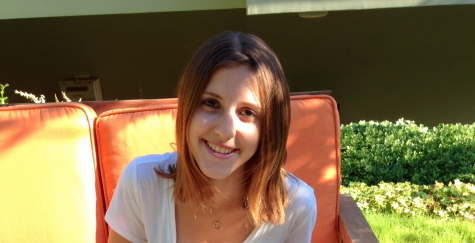Letter from the editor: A correction
June 23, 2015
“Cheatology,” the Boiling Point’s Page 1 article in April about student cheating using the Schoology school social communication system, originally contained a number of errors.
Some were mistakes in mathematical calculations, and the Boiling Point quickly corrected them in a second print edition four days later. They are also corrected here. Online publication was delayed until the math was set right.
Most significantly, 50 percent of students admitted to cheating on Schoology, not 40 percent as reported last month.
In addition, a flaw in the structure of the questions raises doubts about some of the article’s conclusions.
It seems likely that, as the article stated, more students cheat on Schoology exams than on paper.
But it is less likely that cheating on Schoology is double what it is on paper exams. This is because the poll, conducted March 3 and involving 98 of Shalhevet’s 186 students, asked three questions about Schoology cheating and only one about cheating on paper, and the one about paper was worded in a possibly confusing way.
The poll asked these three questions about Schoology cheating:
Have you ever gained access to a Schoology test through other methods?
Have you ever visited other sites or windows on the internet while taking a Schoology test or quiz?
Have you ever looked at your notes on your iPad or laptop while taking a Schoology test or quiz?
Totalling up “yes” responses to all of the Schoology questions, 50 percent of students (49 out of 98) said they had cheated on Schoology.
Then came just one question about paper cheating:
Have you ever looked at hidden materials while taking a test on paper?
Designers of the poll meant that to question encompass all forms of paper cheating – including, for example, looking at others’ papers during the test itself.
But it is possible that some people thought it meant only hidden materials such as the internet or class notes.
Nineteen percent – 20 students out of 98 – answered yes to that question, leading to the story’s possibly false conclusion that cheating on paper was only half what it is on Schoology.
On the flip side, it is also possible that people responded “yes” to using class notes during a Schoology test but actually had not cheated, because use of notes during that test was allowed.
When the mistakes were discovered, editors asked AP Statistics teacher Ms. Atara Segal to examine the responses and compare them to the analysis the Boiling Point reported.
“The premise of the story wasn’t wrong,” Ms. Segal said after reviewing the original poll papers. “The most important finding was that students found that there was more cheating on Schoology.”
She based that partly on answers to another question: “Based on your own experience and what you have observed, you think there is more cheating on Schoology or on paper?”
Sixty-two percent said Schoology and 38 percent said paper.
That question, she said, might be the most reliable of all.
“Statistically, one way to get good data is to ask people what they think others do,” Ms. Segal said. “People might be embarrassed to admit that they do it, so they’re more likely to report what other people do.”
She also said the cause of more Schoology cheating had not been established at all, and that various causes were possible.
“What is particularly shocking is that Shalhevet students, who dedicate their four years of learning to moral development, are cheating,” Ms. Segal added.
Boiling Point faculty adviser Mrs. Joelle Keene said the paper planned to re-poll the student body next fall with clearer questions.
“I do hope that by highlighting this problem, even if the details were wrong, we drew attention to a serious cheating problem,” said Mrs. Keene. “Perhaps even our incorrect story will encourage people not cheat on finals.”
She added that it had been a good learning experience for the paper’s staff.
“Polling is harder than it looks,” Mrs. Keene said.














